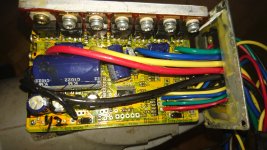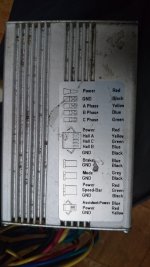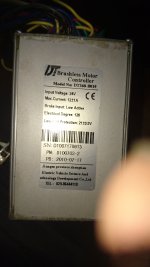Thank you so much, a very valid point, but while no one has mentioned safety at all, I did consider it.Now you can run at 36 or 48 v a motors too dumb to no voltage. What I mean by that voltage is speed you put a hundred volts on that motor it'll run in the air. but if you put it on the ground and try to push you might melt. Does the bike feel stable enough to ride at say 25 mph ? I mean is it a good bike as brakes it works you feel safe ? You could tell I'm concerned
First, to directly answer your question, yes first it feels that it will do it no problem. To expand the answer I also have some logic that I considered.
1) Like most folding bikes it only has 20" wheels so at slow speeds its actually less stable than a bike with bigger wheels (less Giro). Due to its constant slow speed I'm certain it will be more stable with a bit more speed due to increased Giro effect from the wheels (Bikes are more stable going at 20 mph than at 10 mph)
Also, when I first learnt to drive it was on a motorcycle not on a car (tho got a car licence later). The relevance of this being motor bike riders learn to always try and avoid impact altogether first, instinctively, only slam on the brakes as a last resort, if avoiding the objects altogether by accelerating round it isn't possible. Because a 30 mph accident in a car usually dents metal, 30mph of a bike breaks bones ...... I Know.. At about 10 mph I have zero acceleration, I don't want a sports bike, but to me the lack of acceleration feels downright unsafe. Not to mention the issues with slight gradients.... still you can guess. I feel safer on my daughters Xami scooter than on this bike due to lack of power. (And that's saying something)
2) It's a sturdy ally frame purpose built to be an electric bike, so made to take the weights of the motor and battery (unlike some conversions), Its heavier than most steel bikes. Dread to think what it would weigh if it was made of steel.
3) The manufacturers bought out a Mk3 version of this very bike that is practically identical but is 36V. When I discussed making it 36V, they mistakenly thought I wanted them to do it. They said that with replacing the rear wheel motor and the controller and rewiring the bike to fit the electronic controls that the MK 3 has it would not be economically viable. NO MENTION OF FRAME OR STABILITY OR SAFETY ISSUES, indicating the rest of the bike is the same as their current model. It's because I don't intend replacing the motor and can live without the fancy dash indicator, that makes it viable, from a safety point of view will be more or less the same as their current model, without the fancy dash display, (but I think I found one that I can retro fit for another £10 once I get it running).
4) The other 36V bike that I already got working, is a different make of bike its a FreeGo Folding E-Bike (over £1000 new), but is practically identical, in a photo you could not tell them apart.
So all things considered, I feel safe doing it, hence why my questions were all about how to do it.
Keith
Last edited:





